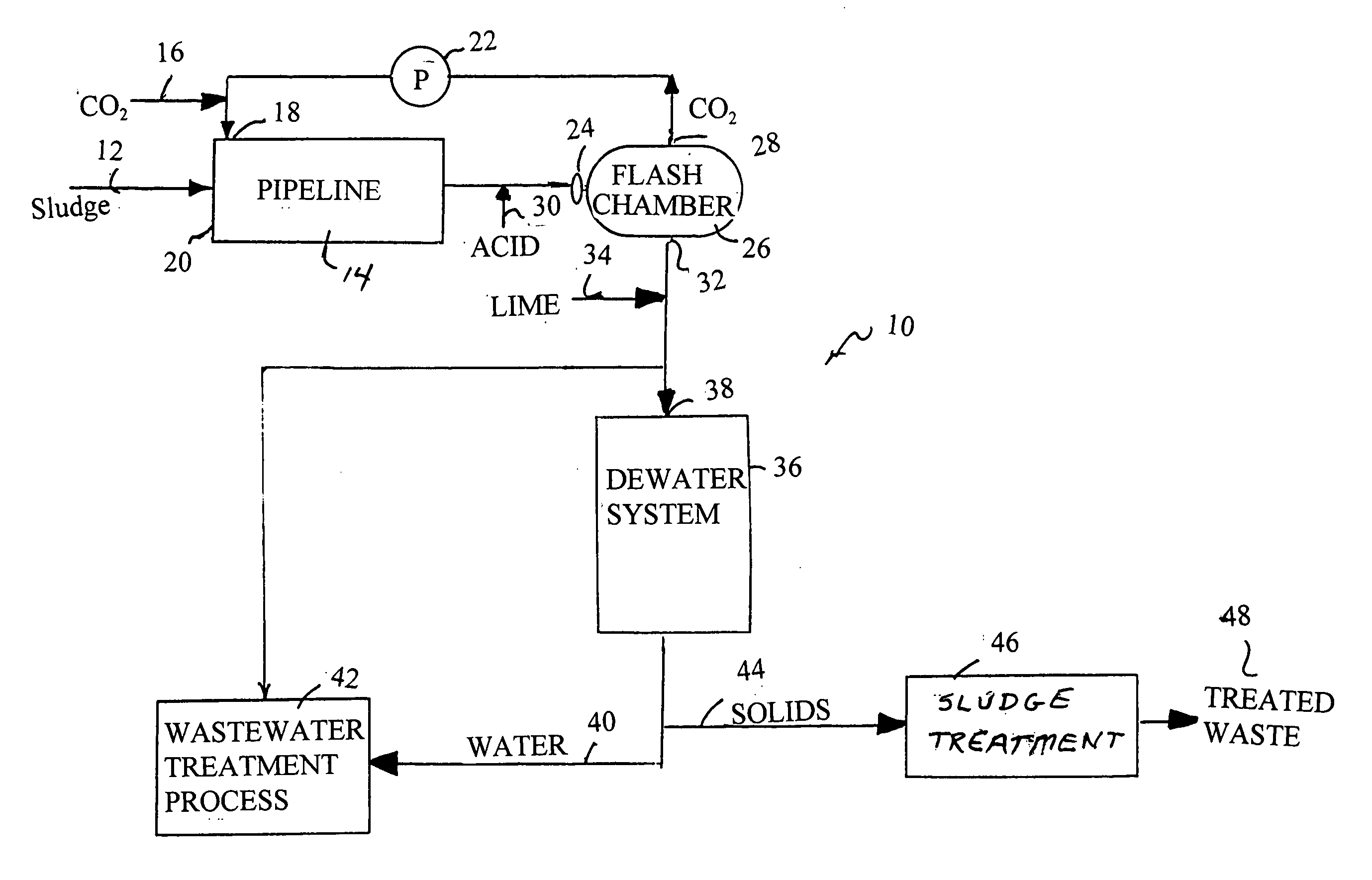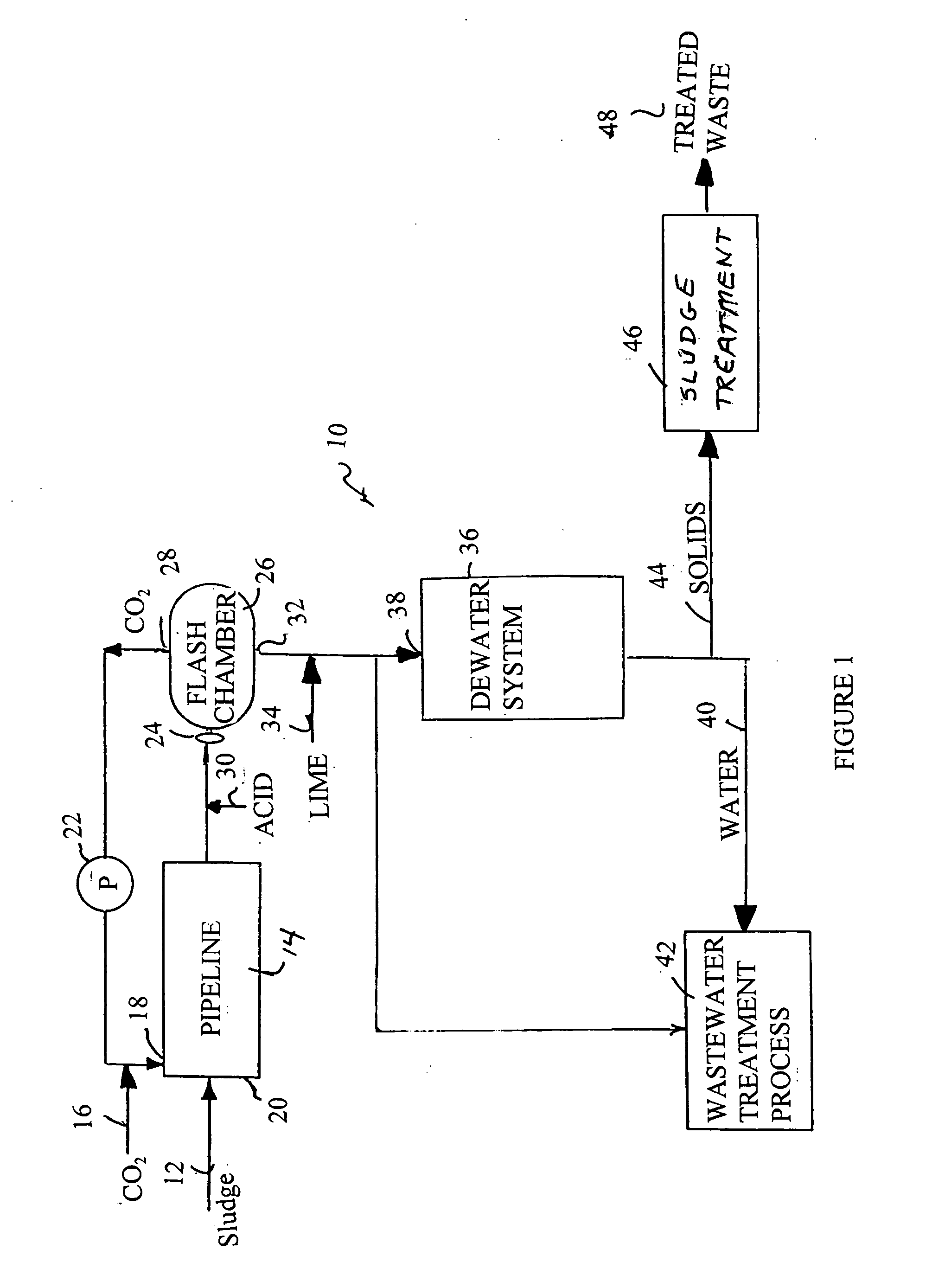Process for removing interstitial water from a wastewater sludge
a wastewater sludge and interstitial water technology, applied in the field of wastewater treatment, can solve the problems of large amount of water retained in the interstitial, difficult dewatering of many kinds of sludge, and high cost of flocculation agents, and achieve the effect of reducing the ph of the sludg
- Summary
- Abstract
- Description
- Claims
- Application Information
AI Technical Summary
Benefits of technology
Problems solved by technology
Method used
Image
Examples
Embodiment Construction
[0030] Referring to FIG. 1 there is shown the process 10 of the present invention for the dewatering of sludge prior to passing to wastewater treatment processes. Initially, in FIG. 1, it can be seen that the sludge 12 is illustrated as passing to a chamber, such as pipeline 14. The sludge 12 is a wastewater sludge having a relatively high water content. The pipeline 14 can be suitably closed so as to allow pressure elevations therein. The pipeline 14 will have suitable length so as to allow the sludge a proper residence time therein under the pressure of carbon dioxide gas 16 introduced through inlet 18 of the pipeline 14.
[0031] When the process 10 of the present invention is a continuous process, the carbon dioxide gas 16 will be injected through inlet 18 into the pipeline 14 adjacent one end 20 of the pipeline 14. As such, the carbon dioxide gas 16 is mixed with the sludge 12 immediately upon entrance into the pipeline. Within the concept of the present invention, it is importan...
PUM
| Property | Measurement | Unit |
|---|---|---|
| Pressure | aaaaa | aaaaa |
| Diameter | aaaaa | aaaaa |
| Length | aaaaa | aaaaa |
Abstract
Description
Claims
Application Information
 Login to View More
Login to View More - R&D
- Intellectual Property
- Life Sciences
- Materials
- Tech Scout
- Unparalleled Data Quality
- Higher Quality Content
- 60% Fewer Hallucinations
Browse by: Latest US Patents, China's latest patents, Technical Efficacy Thesaurus, Application Domain, Technology Topic, Popular Technical Reports.
© 2025 PatSnap. All rights reserved.Legal|Privacy policy|Modern Slavery Act Transparency Statement|Sitemap|About US| Contact US: help@patsnap.com


